Let’s face it: Most of us spend way too much time on our phone texting and scrolling.
While this technology has allowed us to stay connected better than ever, it also poses some ergonomic issues.
If you use your phone as your main source of communication and information, you could be increasing your risk for a variety of problems (1). Constant text messaging can cause or exacerbate conditions from overuse of the thumbs along with problems in the hands, wrists, forearms, elbows, and even the neck.
Get our FREE Beginners Workout Guide
3 weeks to Tighter Abs, Sculpted Arms, and Toned Legs here!
Conditions that are commonly seen from cell phone overuse include:
-
- Tendinitis: Inflammation of the tendons (tissue that attaches muscles to bones) from overuse/repetitive motions of the hands and fingers.
- De Quervain’s Syndrome: Also known as “Texting Thumb,” this results from overuse of the thumb, causing repetitive stress injury that destabilizes the base of the thumb.
- Tenosynovitis: Inflammation of the tendon and its sheath (outer casing) due to overuse of the thumb.
- Neck Pain: Strain in the back of the neck due to the rounding of the neck while looking down at a cell phone.
Other conditions that have been related to cell phone overuse include myofascial pain syndrome, thoracic outlet syndrome, fibromyalgia, and even hypothyroidism.
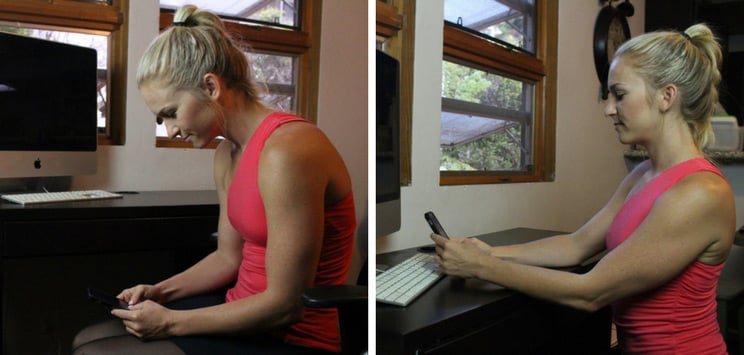
Luckily, there are ways to properly use your phone (2):
- Watch your posture. Don’t slouch over and let your shoulders and neck round forward.
- Hold your cell phone with neutral wrists and don’t press down too hard with your thumbs.
- Rest your arms on a table to keep the device closer up and reduce stress on your neck.
- Use a chair backrest.
- Use both thumbs.
- Don’t type too fast.
- Bring the device towards your eyes rather than bringing your eyes towards your device.
- Stop to stretch if you feel pain.
3-Minute Routine to Fix Hand Pain
If you have achy, painful hands, do this quick routine twice a day.
Thumb Stretch | 15 sec per hand
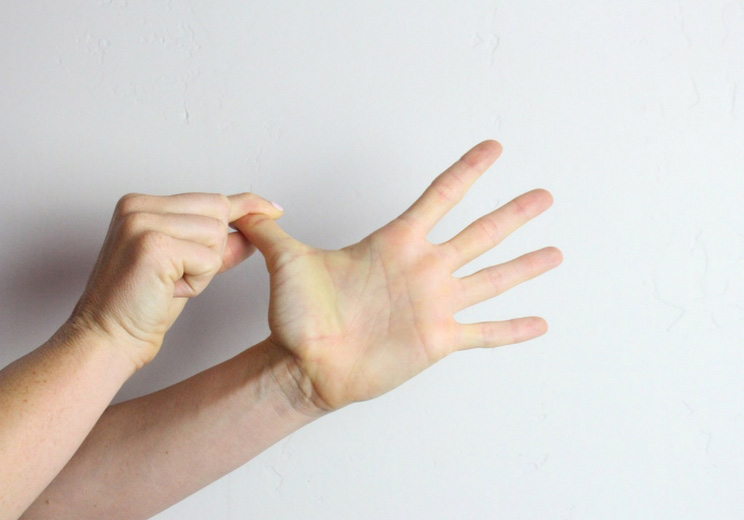
This helps to release tightness in the tissues that stabilize the thumbs.
- Start with your right hand open, with the fingers spread wide.
- Take the index finger and thumb of your left hand and grab ahold of the right thumb.
- Gently pull your right thumb away from your right palm until you feel a stretch. Hold for 15 seconds, then release and rest until the sensation goes away. Repeat one more time on the right hand, then switch for two sets on the left hand.
Tissue Massage | 15 sec per hand
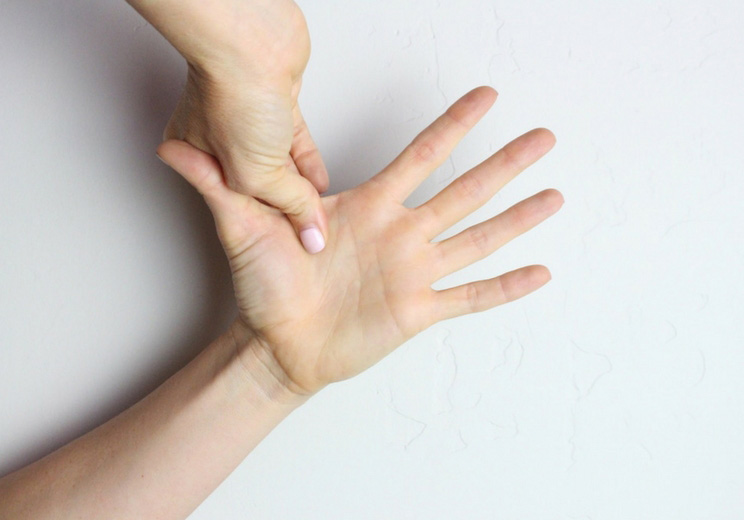
This helps to massage the tissues that stabilize the thumb.
- Start with your right hand open, with the fingers spread wide.
- Take the index finger and thumb of your left hand and gently massage the tissue between the thumb and index finger of the right hand.
- Massage for 15 seconds and then switch hands.
Hand Squeeze | 5X per hand
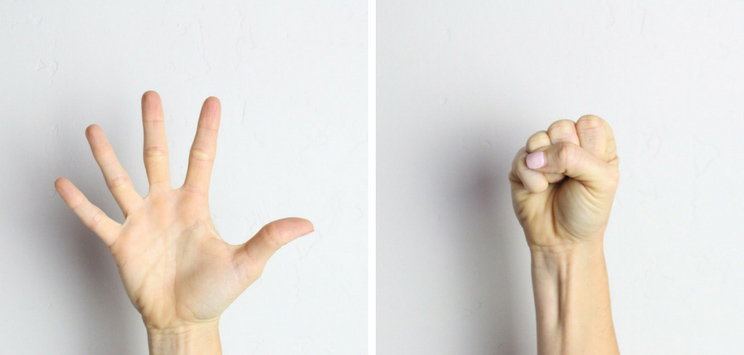
This exercise helps to draw blood flow to the hands, fingers, and wrists.
- Begin by opening up both hands and spread the fingers wide until you feel a stretch.
- Then curl the fingers in to make your fists into a ball. Squeeze for a moment.
- Open both hands up and repeat steps 1 and 2 for 5 repetitions.
Wrist Stretch | 15 sec per hand
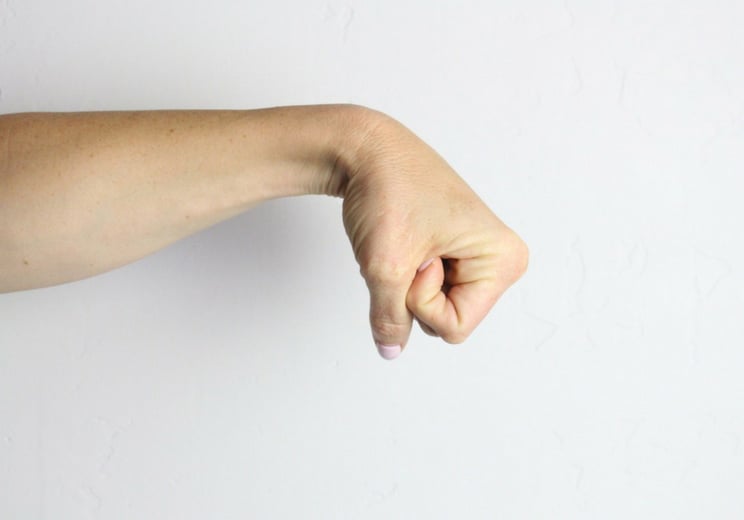
This helps to stretch the tendons that control the thumbs and pass through the wrists.
- Start with your arms out in front of you.
- Make fists with both of your hands.
- Drop your fists down towards the ground until you feel a stretch through the tops of the wrists. Hold for 15 seconds and then release.
Forearm Massage | 30 sec per arm
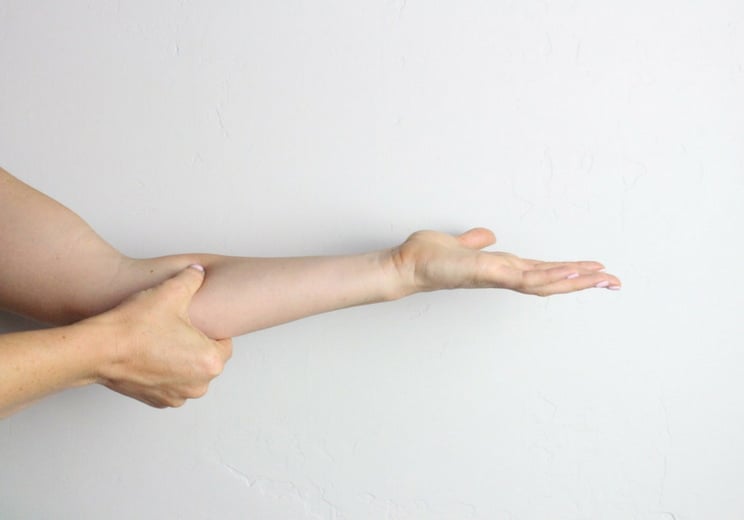
This self-massage helps to release knots in the forearms.
- Begin with your right forearm out in front of you.
- Grasp your right forearm with your left hand. You should position your left hand so that your thumb is on top.
- Work your way down your forearm looking for points of tension. When you find a point of tension, hold down for a few seconds and then continue moving down the forearm until you find another spot. After you’ve done the entire right forearm, switch arms.
Tip: If you have more time, you can do this self-massage longer, pressing down on each knot for 20-30 seconds.
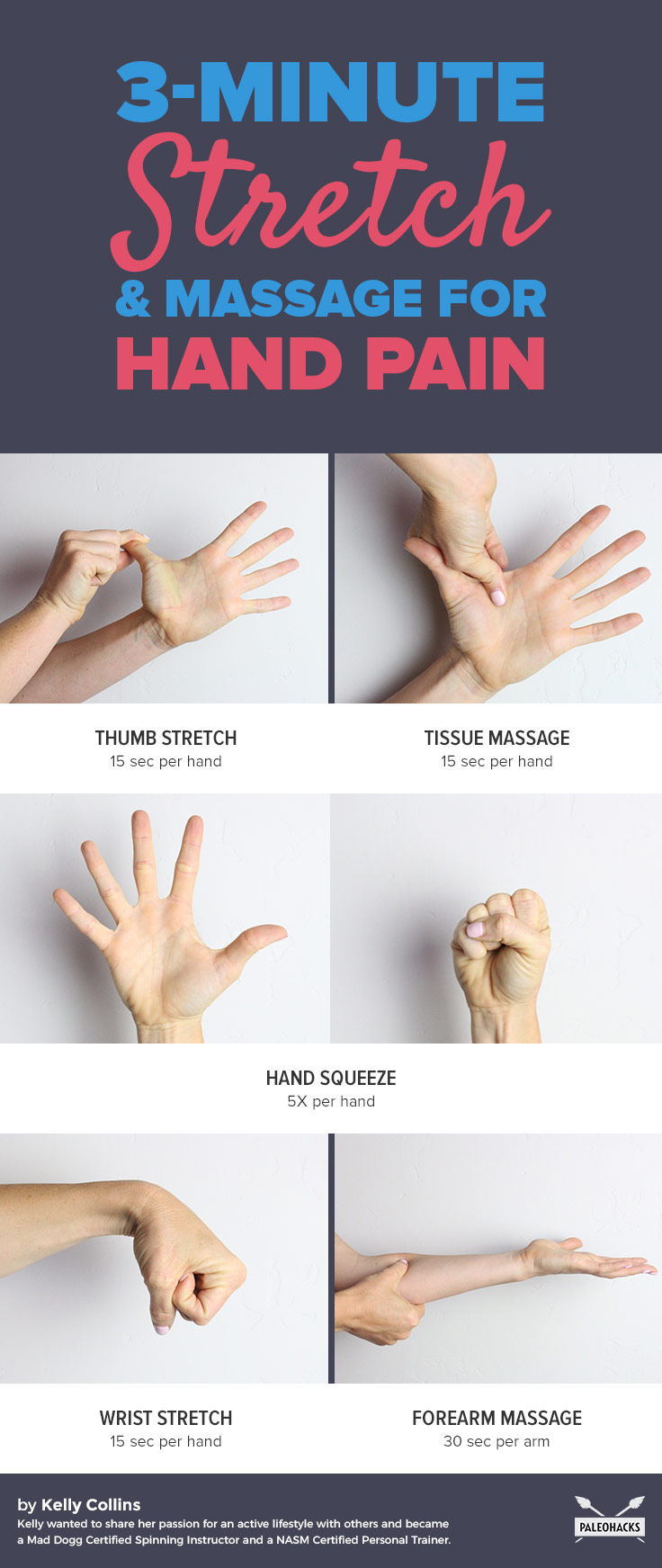
(Your Next Workout: 7 Calming Yoga Poses for Autoimmune Disease)


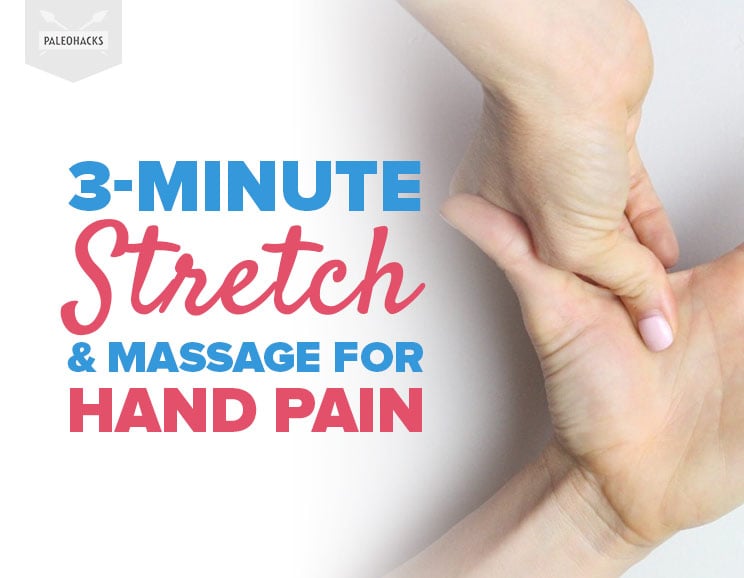
 23 Epic Maple Syrup Recipes That Don’t Involve Pancakes
23 Epic Maple Syrup Recipes That Don’t Involve Pancakes
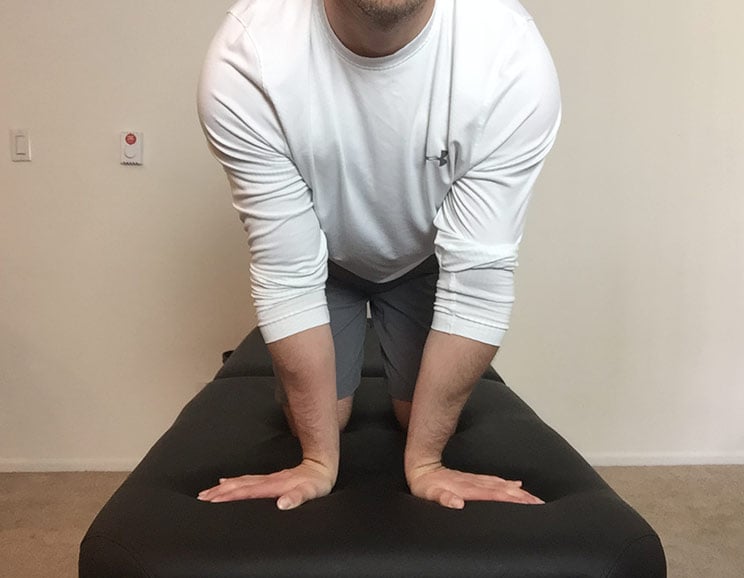

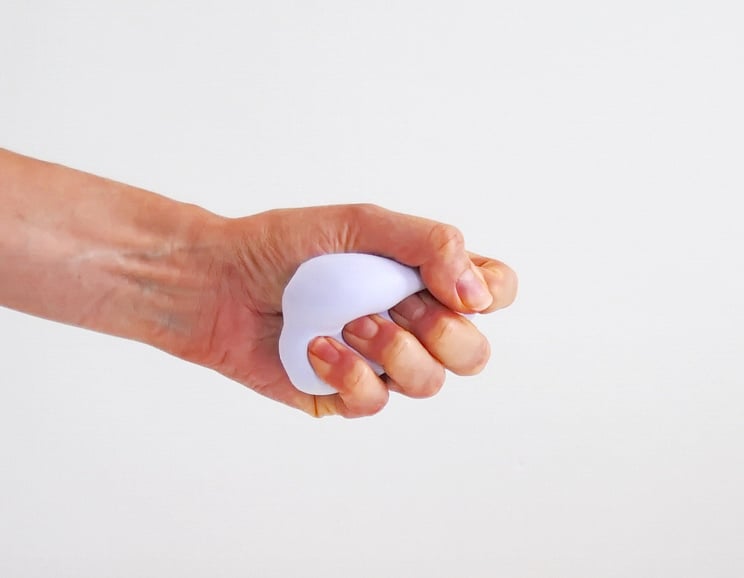
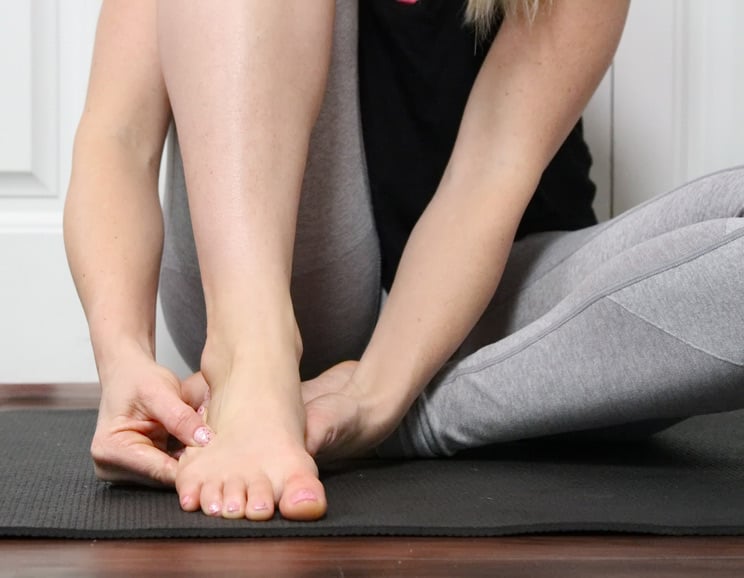
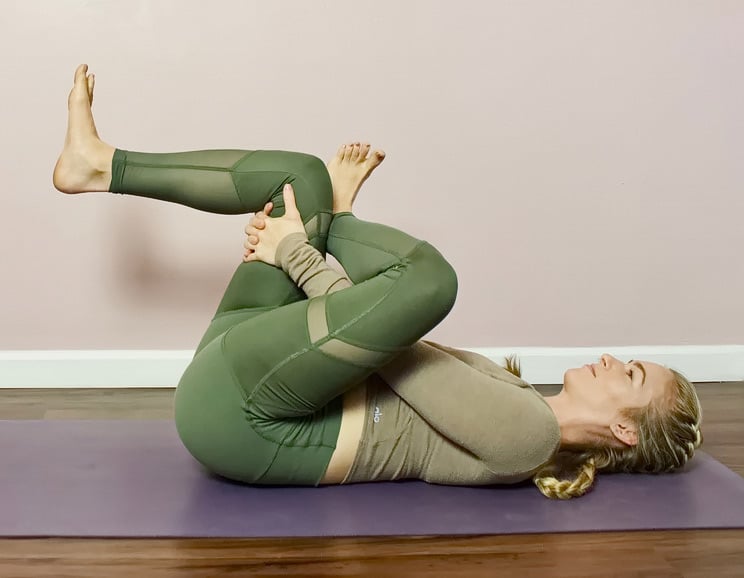
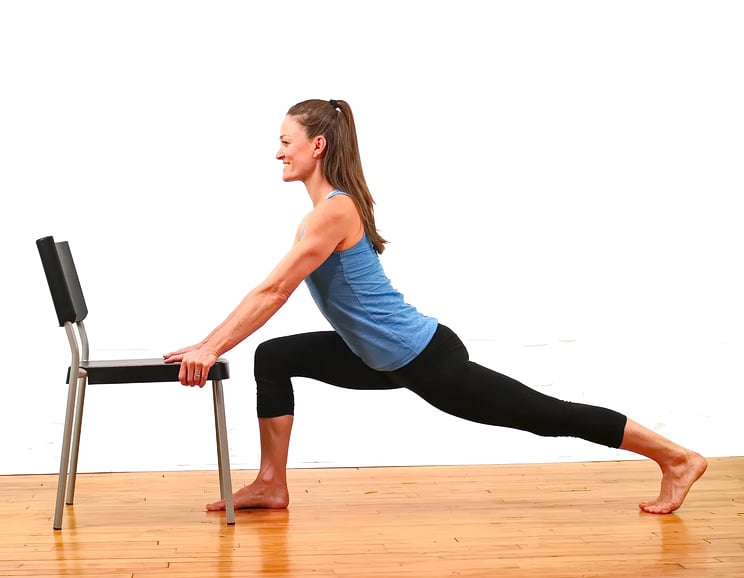
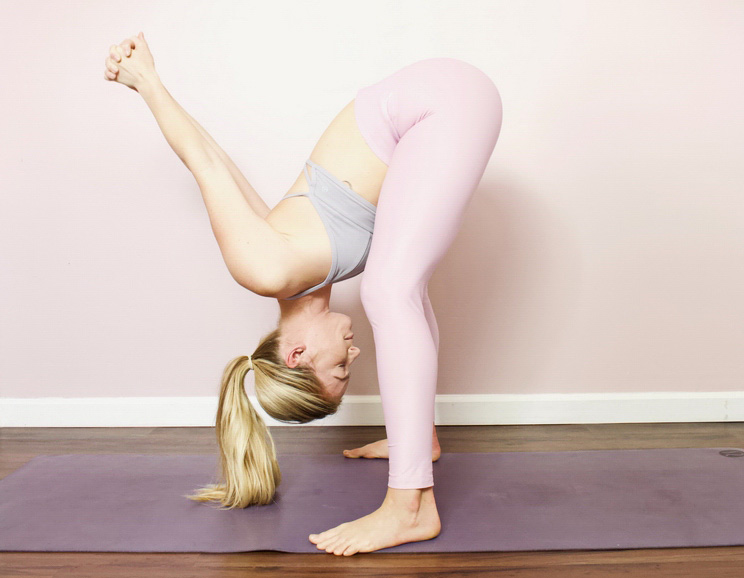
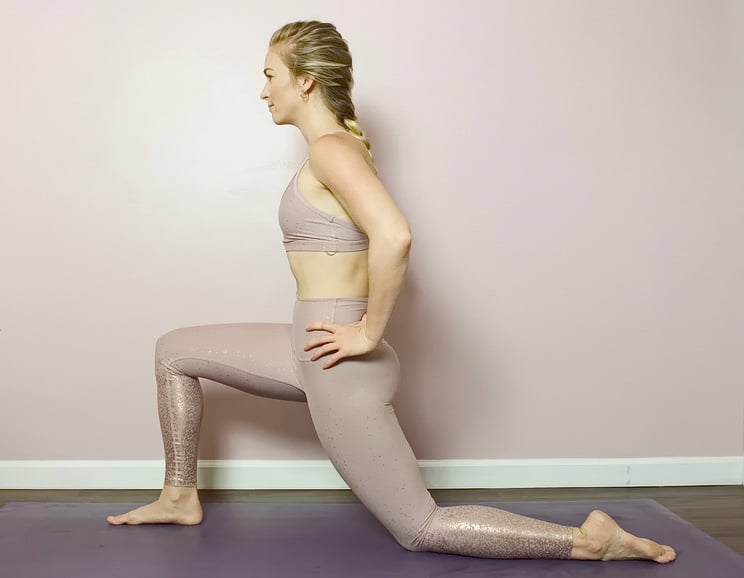
Show Comments